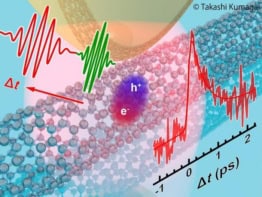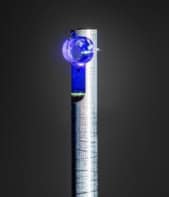Hailed as the world’s most powerful transmission electron microscope, TEAM 0.5 at the Lawrence Berkeley National Laboratory has clinched another world first – resolving matter to less than half an angstrom with high contrast. The famous microscope has been tweaked by researchers at the US Government-funded laboratory to resolve a 47 picometre spacing in a Germanium crystal.
Led by Rolf Erni, the scientists say their microscope could in theory improve resolution by a further factor of two. Researchers say that atomic-resolution tomography – a useful technique for finding defects in nano-scale devices – will be among the applications to benefit from this advance.
Transmission electron microscopes (TEMs) work by firing a beam of electrons through a specimen onto an imaging device behind. Interaction between the electrons and the specimen are magnified then focussed before being detected by a sensor. The width of the electron beam is the ultimate limitation to spatial resolution.
Berkeley’s TEAM 0.5 has an advantage over “classic” TEMs because it corrects for spherical blurring caused by “aberrations” in the lens. In 2007, the microscope grabbed headlines when it was used to resolve spacing in a Germanium crystal of less than at 0.5 angstrom. Since then, attempts to further improve the spatial resolution have focussed on further reducing the diffraction caused by lens aberrations.
Probing deeper
Taking a different approach, Rolf Erni and his colleagues turned their attention to the electron probe itself. They realized that the electron source and the geometrical source size are crucial parameters that govern the size of the electron beam. Analysis of a range of different electron sources led to the optimum set up (Phys. Rev. Lett. 102.096101).
“Simply put, TEAM 0.5 is the best transmission electron microscope in the world, representing a quantum leap forward in instrumentation,” said Alex Zetti, a physicist at Berkeley, who was not involved in this latest research.
“Resolution is also still a limitation in our ability to image the structure of amorphous materials and this is an important step forward.” said Andrew Bleloch, an electron microscope researcher at the University of Liverpool
He added, “As a frivolous illustration, if the electron wave is scaled up to light wavelengths then it would be the equivalent of a microscope resolving a human hair in Manchester from London (roughly 250km).



